A well-known industrial monument as a new place for art
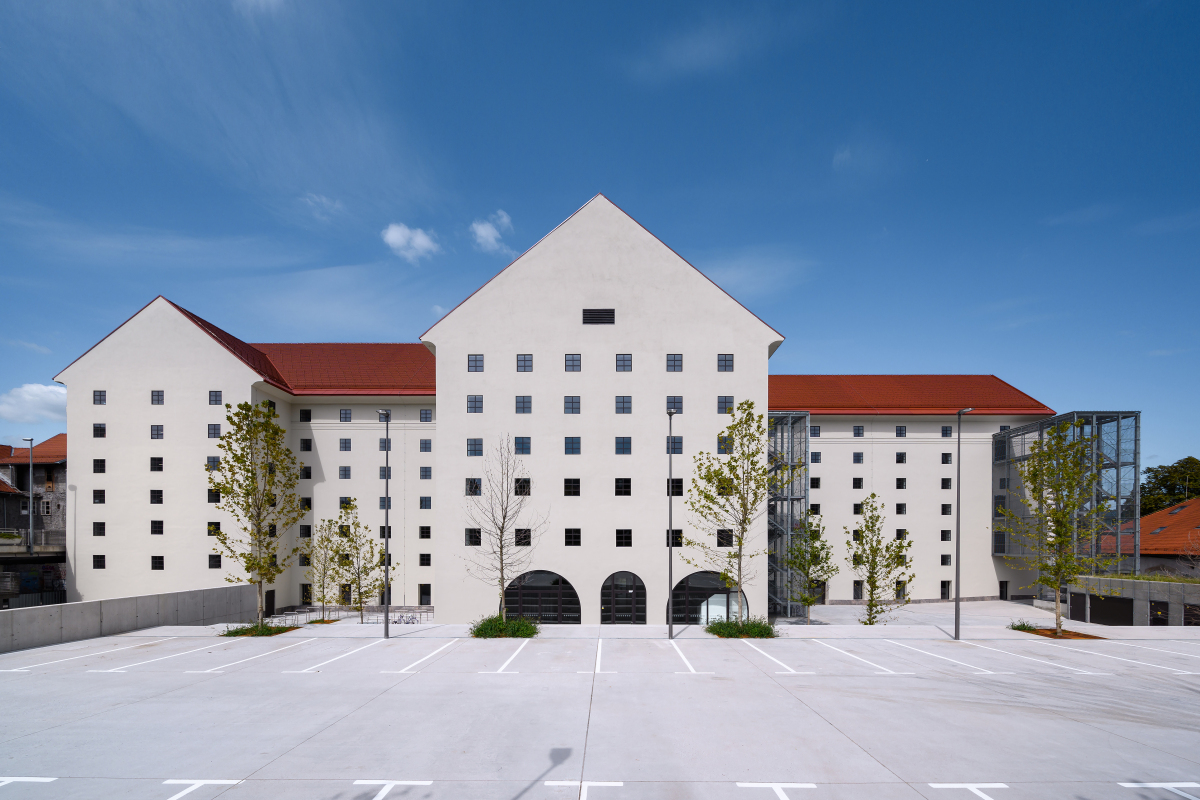
Even though Ljubljana is known as a city that was significantly shaped by its great son, the architect Joze Plecnik (his works in the Slovenian capital were inscribed on the World Heritage List in 2021), you could never miss the industrial monument Cukrarna, even when it had been left to decay for decades. The striking building inevitably catches the eye when you visit the Plecnik dam on the Ljubljanica River, or when your gaze falls on a wonderful relic of the architecture of Slovenia’s socialist era, the tgh-48 car garage by Savin Sever (1961), which has been a protected heritage site since 2018.
The industrial building Cukrarna was built in 1828 as a sugar refinery and was the largest factory in the Austro-Hungarian Monarchy in the mid-19th century. In 1858, after a major fire, its fate was sealed. After reconstruction, it was inhabited by soldiers, workers and people on the margins of society and was closed in 1980.
In 2008, the city acquired the building and announced an international competition to convert it into a centre for contemporary art, which the Slovenian architecture firm Scapelab won with a radical concept. They gutted the existing building with its very low ceiling heights and inserted a completely new multi-storey volume into the empty shell, which is suspended from a new roof truss.
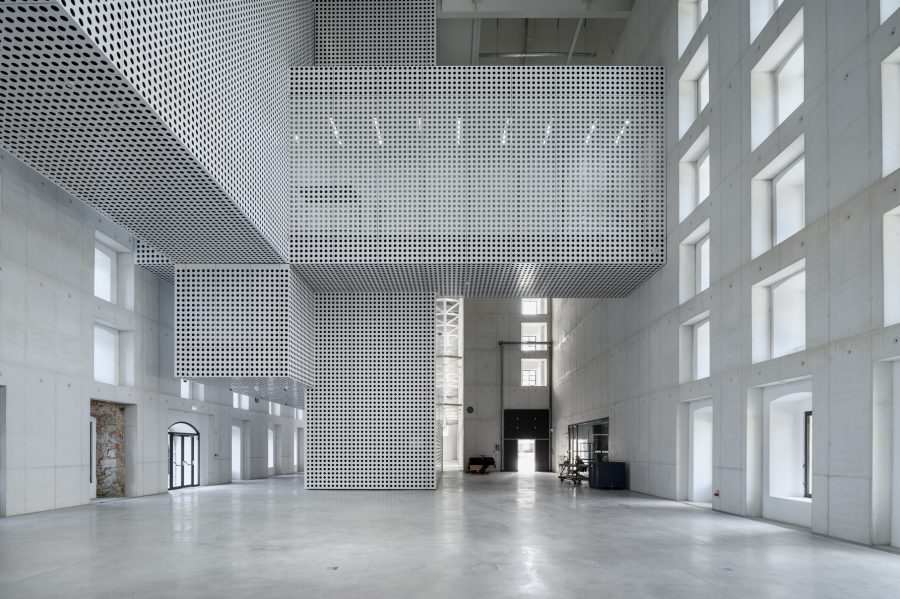
The interior: hollowed out and provided with new volumes and exhibition levels. Industrial monument. Photo by: ©Miran Kambič
This volume has a sculptural design and leaves the centre of the huge foyer completely open at the top. Old and new should be clearly distinguishable, but both should come to a dialogue with each other. This is why the floating galleries now maintain a respectful distance from the outer walls, which are supported by an inner concrete shell.
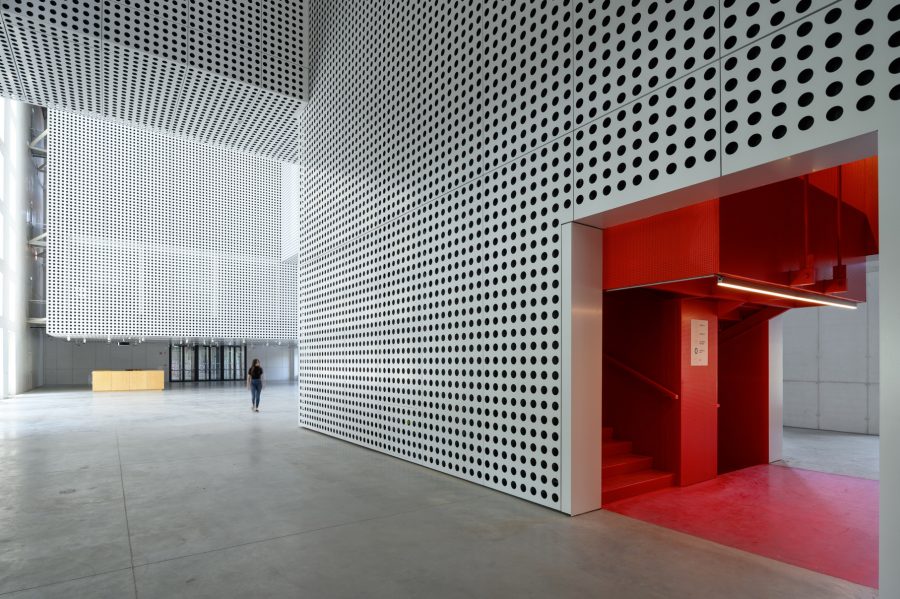
The staircase from the central hall to the exhibition levels. Photo by: ©Miran Kambič
This traces all the window openings in the façade and thus makes the old masonry visible in all its visual power. The floating bodies with a shell of white sheet metal perforated with dots allow neither their three exhibition levels nor the installations they contain to be recognised from the central entrance area. They are sculptural volumes that keep their distance from the façade by means of steel struts.
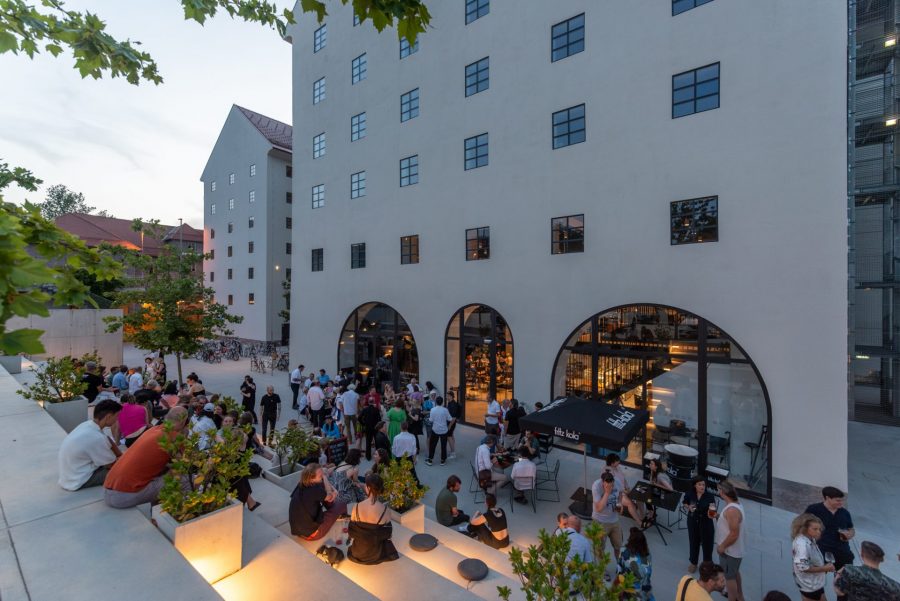
Lively outdoor space: terrace of the café on a summer evening. Industrial monument. Photo by: ©Blaz Gutman
If you enter the new art venue from the river on its narrow side, you are overwhelmed by the first impression of the space and can immediately imagine that the renovation and reorganisation of the Cukrarna was a complicated construction site. It was worth 21.5 million euros to the city. It first has to establish itself as a venue for contemporary art with two to three exhibitions every year. A conference room, a seminar room and a café, which is very popular in summer, are intended to make the Cukrarna and the sparse but beautifully designed open space around the building even more attractive.
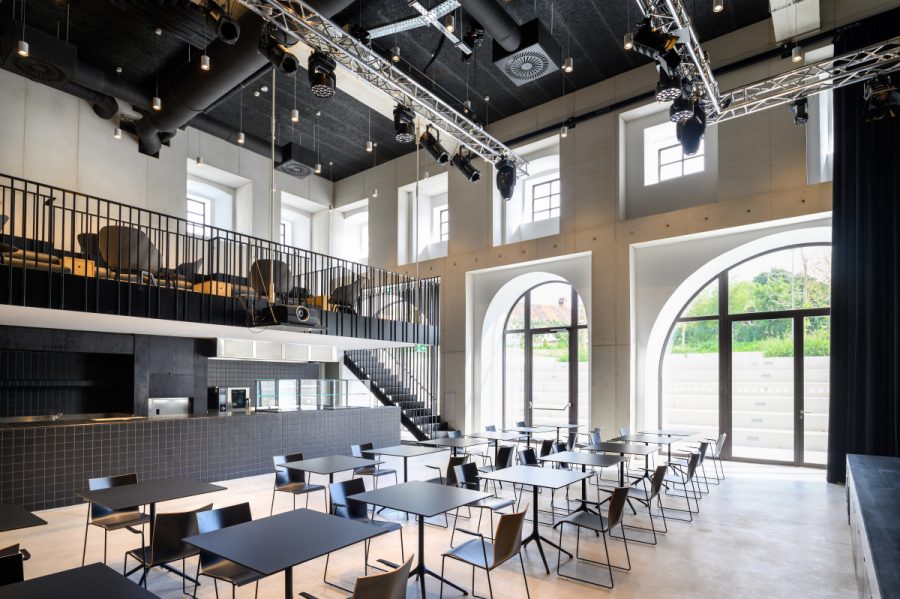
Part of the new art gallery: the cafè. Photo by: ©Miran Kambič
The 35th Ljubljana Graphic Art Biennale is hosting a group exhibition until 14 January, 2024. Throughout the year, however, this new place for art invites visitors to linger during an architectural tour, on which our local guides have so far been able to convince all visitors that Ljubljana as a city is worth a visit.






No Comments